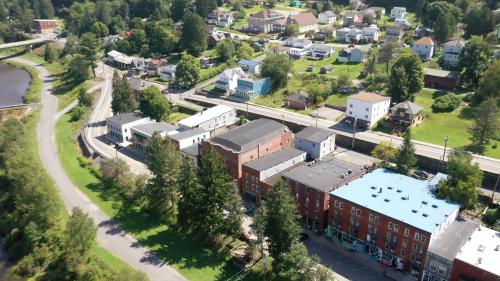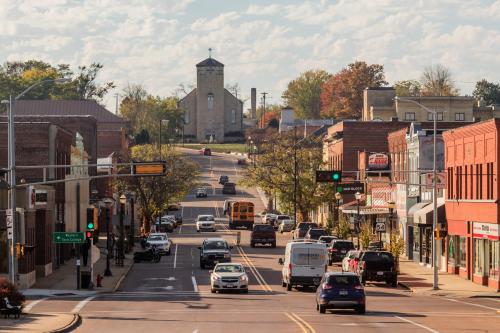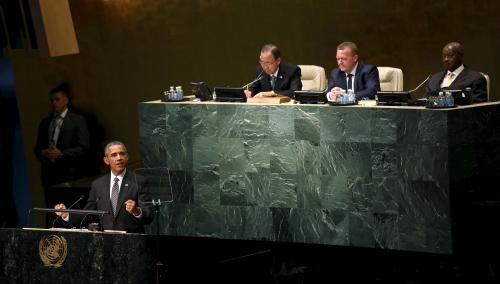Congress appropriated $65 billion through the Infrastructure Investment and Jobs Act (IIJA) to close the digital divide and ensure universal access to reliable, high-speed, and affordable broadband across the United States. The cornerstone—$42.45 billion—rests with the implementation of the Broadband Equity, Access, and Deployment (BEAD) program, a new program overseen by the National Telecommunications and Information Administration (NTIA) that entrusts execution and deployment of the resources to state governments.
A significant segment of the remaining unserved and underserved communities is located in rural places. The Federal Communications Commission (FCC) estimates that 17.3 percent of rural Americans and 20.9 percent of Tribal lands lack access to physical broadband, even using a methodology that had been widely criticized for undercounting. BEAD’s success will hinge in large part on identifying and reaching those communities— many of which have relatively high levels of social vulnerability and low levels of civic capacity—which have limited their experience and abilities in accessing federal resources. Availability is not the only challenge: Once physical infrastructure is in place, adoption and use will be necessary to maximize the community benefit, so BEAD implementation should be complemented by states’ efforts with resources available from the Digital Equity Act to increase digital inclusion.
Vulnerable rural communities are the type of community most likely to encounter significant barriers to broadband availability and adoption. In addition, rural communities of color score more poorly than their majority-white counterparts on measures of digital divide and digital inclusion, reflecting the dual burden of race and place.
NTIA recognizes the importance of having un- and underserved communities participate in designing and informing solutions intended to meet their needs. Its guidance to states and territories emphasizes the imperative of coordination and outreach to local communities. To be successful, planning and implementation processes must meet these communities where they are, enabling them to inform solutions that fit the unique context of their history, geography, and demographics.
Differences in geography, community governance, culture, politics, legacies of historic discrimination, preexisting policies, and arrangements among levels of government (local, regional, and state) all increase the complexity of successfully extending broadband infrastructure to these areas and driving widespread adoption. This policy brief offers analysis and recommendations to policymakers, internet service providers (ISPs or providers), and practitioners to enable authentic community engagement and increase the likelihood of successfully closing these gaps across rural America.
Barriers to meaningful engagement: Within these diverse contexts exist a set of recurring thematic barriers to successful deployment and adoption. These include: low levels of trust in the process and/or skepticism of the motivations of providers and state policymakers; limited capacity of local governments and local civil society; lack of community ownership and buy-in; financial constraints and burdens; and digital readiness. If neglected, these might result in a local solution that fails to meet the needs of the community it purports to serve.
Key principles: Authentic community engagement generally reflects a common set of principles that provide a roadmap for success. These include: involving trusted entities, prioritizing accessibility, enhancing inclusion, simplifying technicalities, and sustaining engagement over time. By integrating these principles into models of facilitation, ranging from nongovernmental to fully public, communities can increase their likelihood of developing a customized approach that leverages their unique combination of assets and addresses their unique barriers to improve overall outcomes.
Success metrics: Measuring the success of community engagement is difficult by nature. Quantifying indicators that are qualitative in nature, such as trust and inclusion, is difficult without losing the nuance to accurately interpret outcomes. It is imperative that the community engagement process mandated by NTIA not simply become a box-checking exercise by ISPs, with local interactions that do not result in meaningful input and trusted relationships. Transparency, accountability, and consistent engagement are critical to raising the bar. Ultimately, the best metric of success will occur later in implementation—whether unserved and underserved communities gain access to broadband through BEAD funding.
Recommendations: To maximize the opportunity that BEAD presents and to close the digital divide once and for all, we recommend the following:
TRANSPARENCY AND ACCOUNTABILITY
1. Allow rolling challenges to FCC maps and publish transparent adjudication in a timely manner. Given the mixed historical track record of its maps and the importance of addressing trust deficits and skepticism within communities that are meant to benefit, it is imperative to ensure that the data is unimpeachably credible and builds—rather than potentially undermines—confidence among those stakeholders.
2. Mandate annual reporting, preferably through an easily accessible and navigable website and map, by NTIA (in conjunction with United States Office of Management and Budget (OMB)) that measures progress in reaching people and communities that remain left behind. It will be important for all stakeholders—residents, providers, and state agencies—to have access to the same authoritative community-level data that tracks the progress of BEAD’s implementation in closing gaps. Such reporting should also map these gaps against critical demographic and economic data, including income and poverty, race, and age, to understand the types of communities and people that remain underserved.
3. Create a community advisory committee for NTIA composed of representatives from across the federal government and community stakeholders from across the country. This committee would provide a strong community voice for oversight, help shape and advise annual reporting on what communities remain left behind, and inform NTIA policy and practice.
CAPACITY-BUILDING AND COMMUNITY ENGAGEMENT
4. Encourage states to create dedicated funding, staffing, or public-service opportunities to support community engagement for unserved and underserved communities. NTIA should encourage states to invest intentionally in technical assistance for community engagement as they create and submit their five-year plans. Successful community engagement at the local level will inform successful projects and will require intentional financial support to provide capacity, expertise, and coordination to communities.
5. Develop clear guidance for meaningful community engagement. NTIA should require that projects demonstrate effective engagement and develop specific guidance to identify such engagement.
6. Ensure matching requirements are not a barrier for highly vulnerable unserved or underserved communities. As NTIA creates guidance for states on requesting waivers of matching requirements for “high cost” areas, a useful model would be adopting the waivers currently used by USDA’s ReConnect program: Allow a full waiver of matching requirements for projects serving persistent poverty counties and colonia, for communities that are in the bottom 25 percent of the CDC’s Social Vulnerability Index, and for Alaska Native Corporations and Tribal lands.
7. Increase and emphasize support for immediately available solutions that leverage community institutions. NTIA should make clear to states that investment in broadband for community anchor institutions, such as rural libraries and schools, is encouraged and an excellent approach to quickly expanding access.
8. Create statewide multistakeholder councils to guide implementation. States should be encouraged to create advisory committees or councils to guide and provide feedback on implementation.
IMPLEMENTATION
9. Set a high standard for the preference for fiber-optic cable. Doing so would guard against the need for subsequent public investments to keep pace with growing needs. Projects and locations that plan to use an alternative technology should be mandated to provide sufficient feasibility documentation to receive a waiver and clearly describe their ability to support 100/20 Mbps download/upload speeds.
10. Address permitting barriers. Both federal and state governments should recognize and try to address the difficulties that can emanate from complexity associated with construction and land-use permitting, especially across jurisdictional boundaries of different governance entities.
11. Integrate workforce development strategies into broadband implementation projects. Both the federal government and states should seek to maximize the opportunity for leveraging the workforce opportunities that broadband projects will provide. The right mix of outreach, training, incentives, and wraparound services could enable new opportunities for underemployed or unemployed people in local labor markets but will require targeted approaches and investment.
The Brookings Institution is committed to quality, independence, and impact.
We are supported by a diverse array of funders. In line with our values and policies, each Brookings publication represents the sole views of its author(s).








